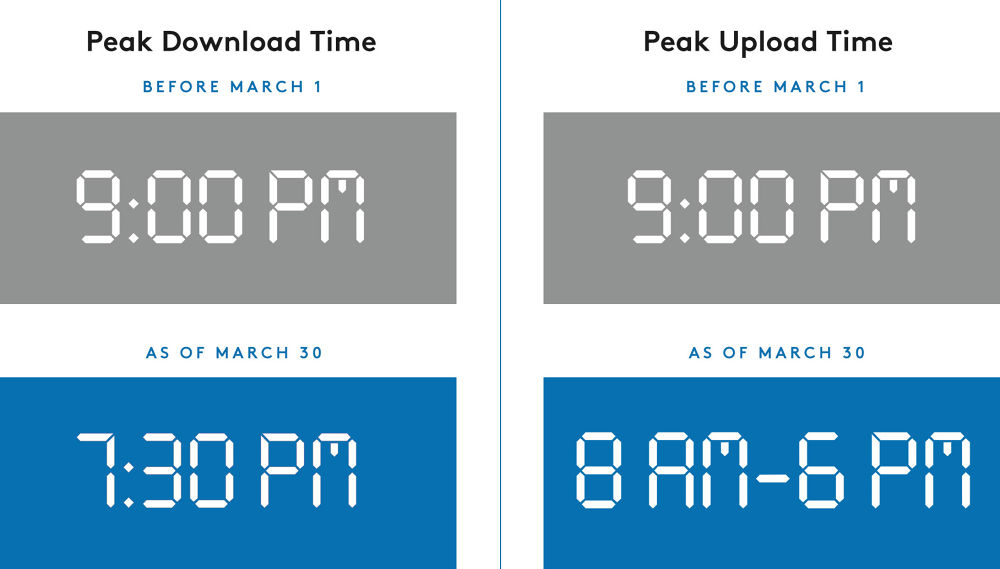The big picture: Comcast this week said network traffic is starting to plateau in some of the first cities that issued stay at home orders such as San Francisco and Seattle but still remains at highly elevated levels. Fortunately, the network has been able to remain stable thus far.
Weekday usage of VoIP and video conferencing applications is up 212 percent while VPN traffic has increased roughly 40 percent, the result of more people moving to work and learn from home environments. This has also shifted peak download time from 9:00 p.m. before March 1 to around 7:30 p.m. on as of March 30; peak upload time, meanwhile, has moved from 9:00 p.m. before March 1 to between 8:00 a.m. and 6:00 p.m. as of March 30.

Since March 1, Comcast notes that peak traffic is up about 32 percent overall and up 60 percent in select areas. Still, it is "within the overall capacity of our network," Comcast added.
Surges have also been observed on the weekends as customers increasingly turn to television and gaming for entertainment. Comcast said it has seen a 38 percent increase in streaming and web video consumption. Gaming downloads, meanwhile, are up 50 percent on average and 80 percent for new releases.
On Xfinity Mobile (an MVNO of Verizon), Comcast has noticed a 10 percent decline in LTE data usage but a 24 percent increase in mobile data usage over Wi-Fi.
Masthead credit: asharkyu
